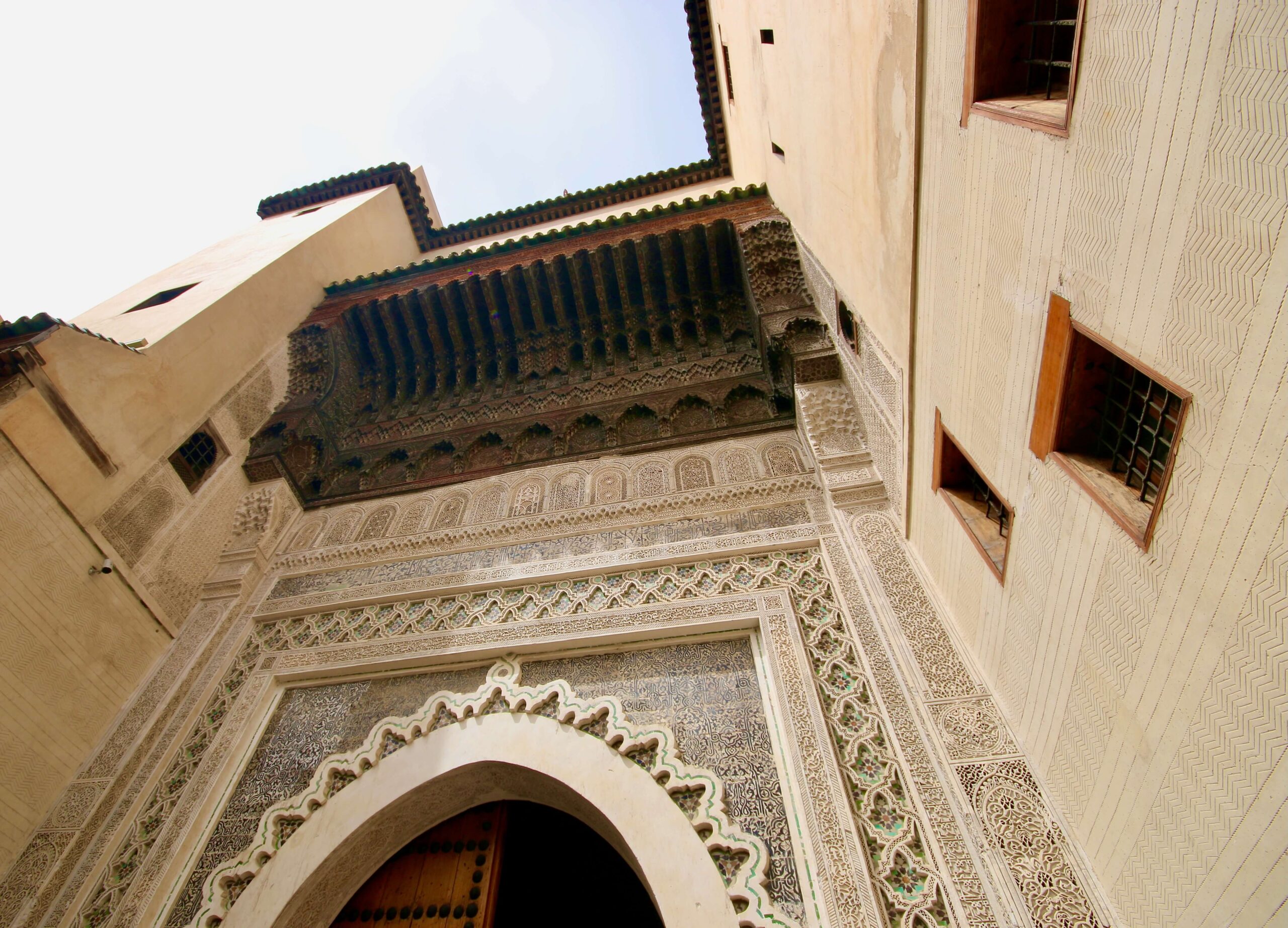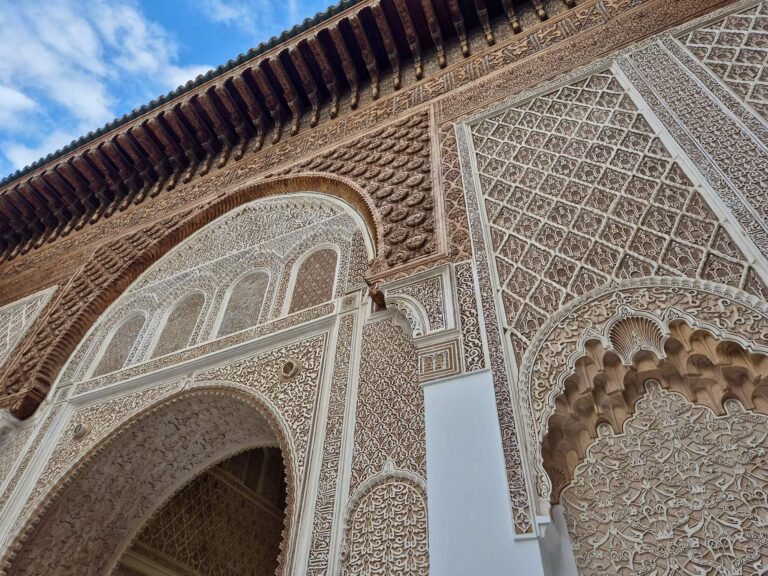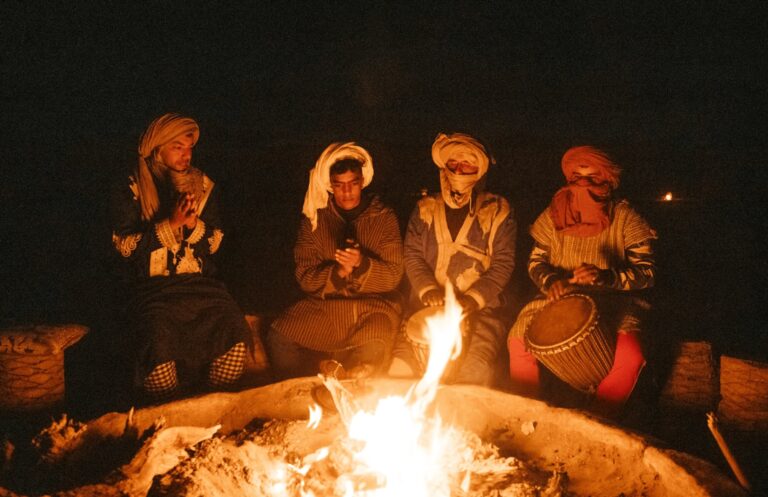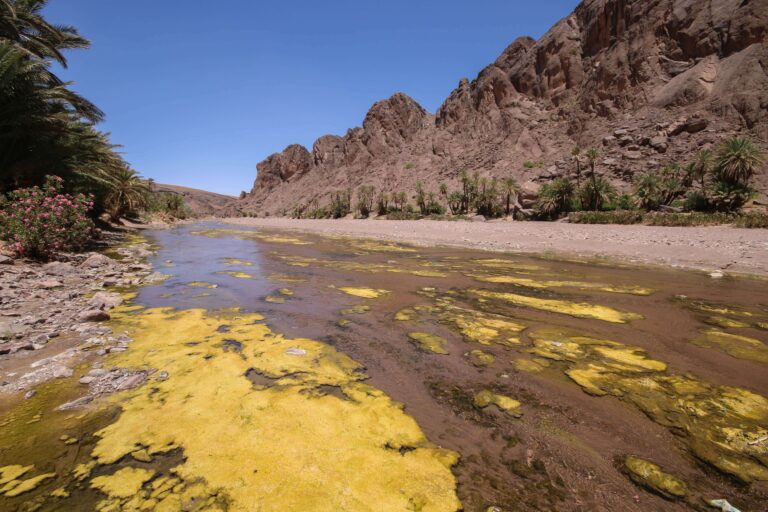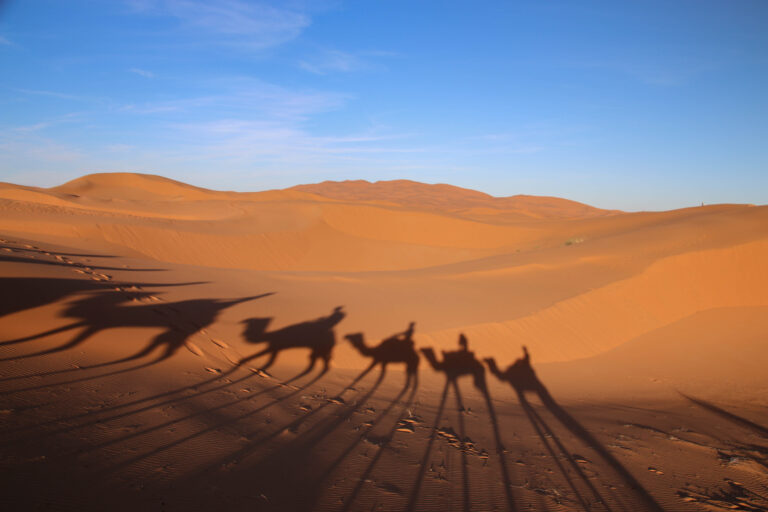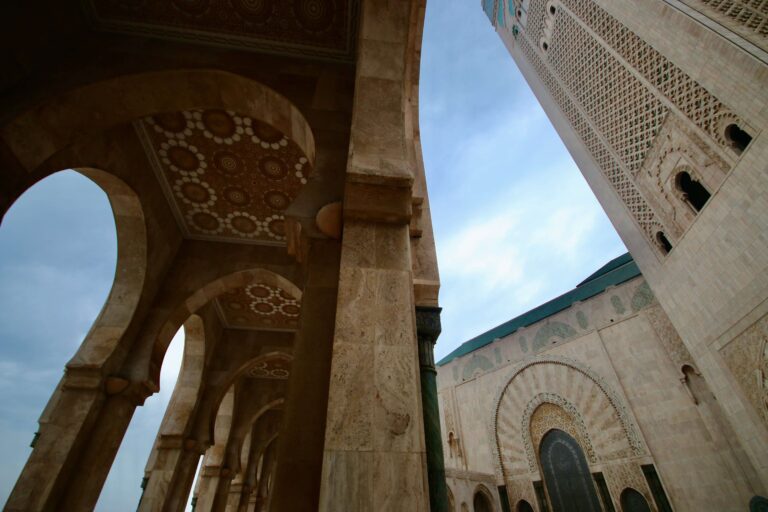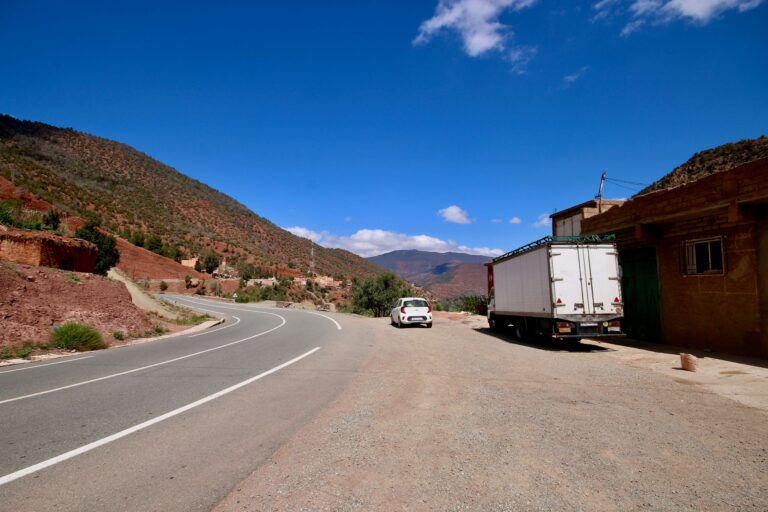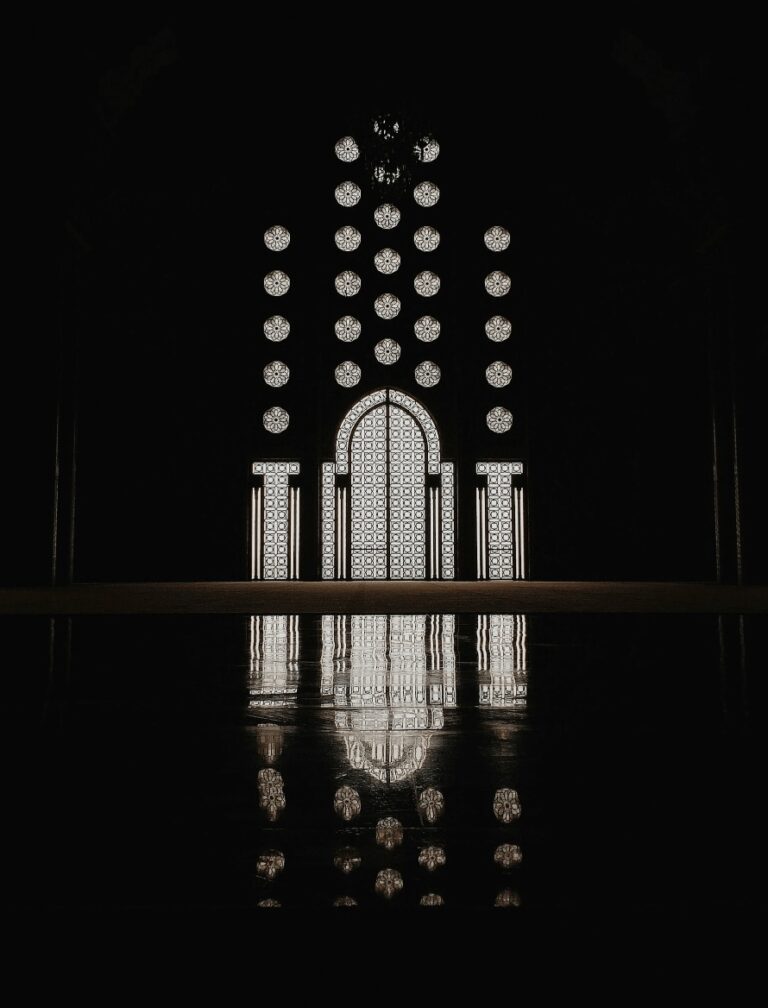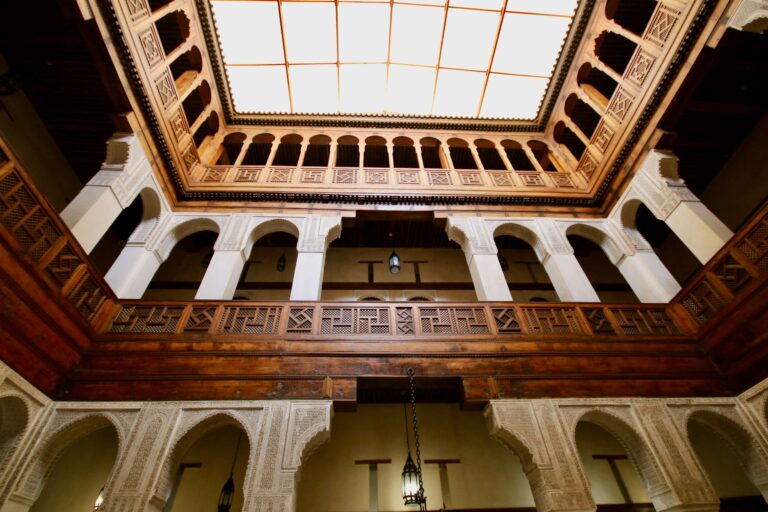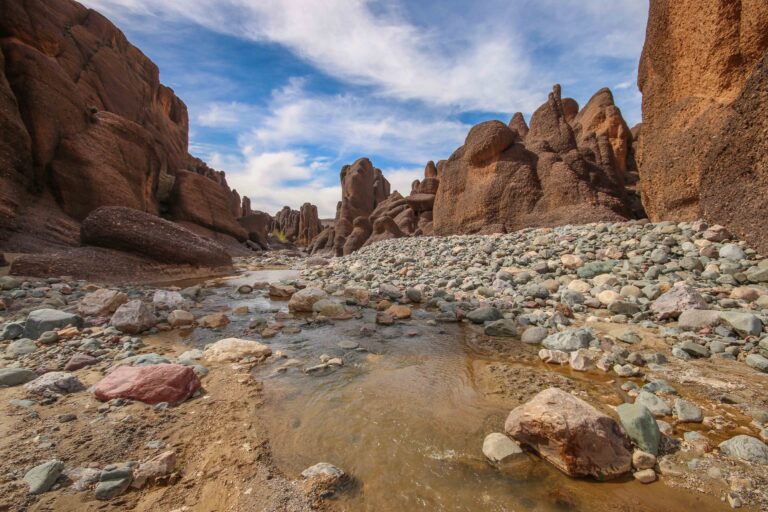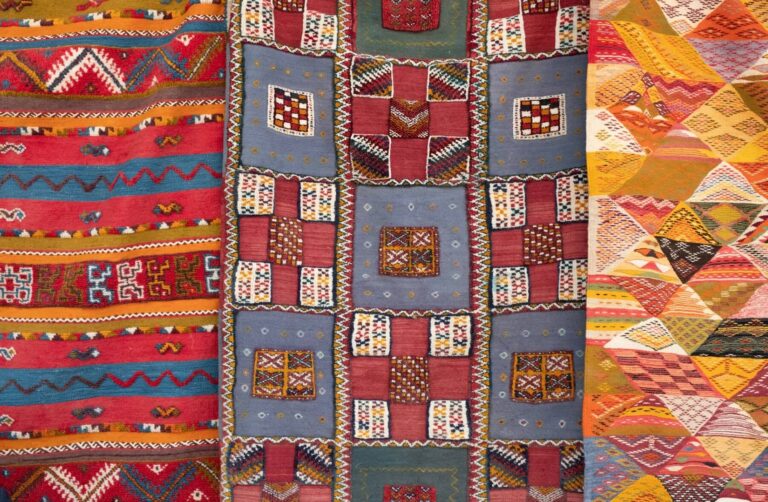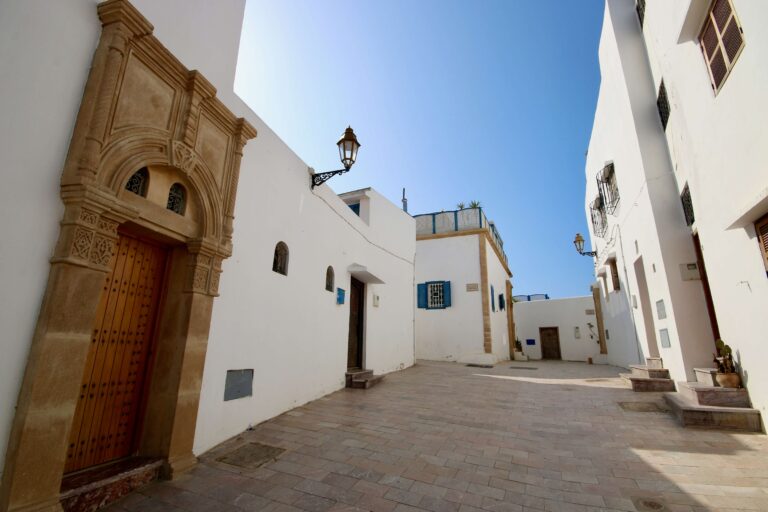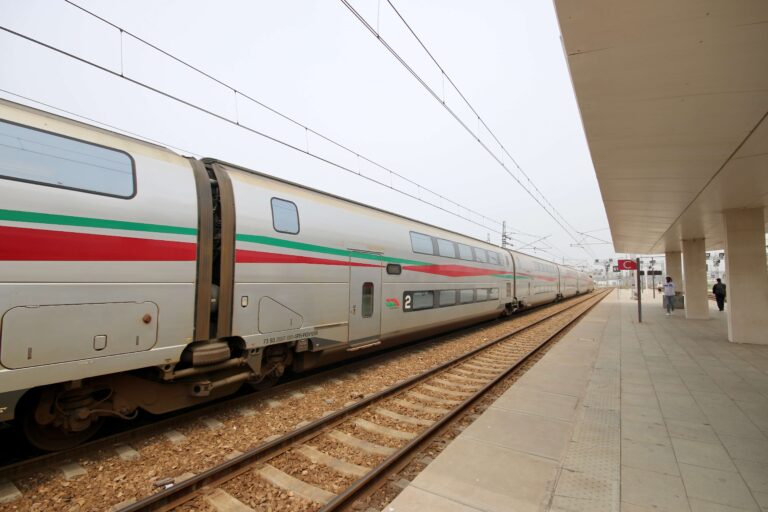Moroccan Architecture: Riads + Kasbahs + Madrasas + Babs
Morocco’s architectural heritage reflects the country’s diverse geography and rich history, woven together through successive waves of settlement and military conquest.
It’s a testament to its many cultural influences, from the ancient Roman ruins of Volubilis to the historic ksars along the Saharan trade routes and the madrasas of the Saadian and Marinid dynasties.
If you’re planning a trip to Morocco, exploring some of the country’s most beautiful buildings should be high on your list of things to do, whether you’re focusing on the north, south or desert regions.
In this introductory guide to Moroccan architecture, I’ll answer some of the most frequently asked questions about Moroccan design. Additionally, I’ll share examples of architectural icons to add to your itinerary.
If you’re looking for FAQs about travel to Morocco, head to my detailed article here.
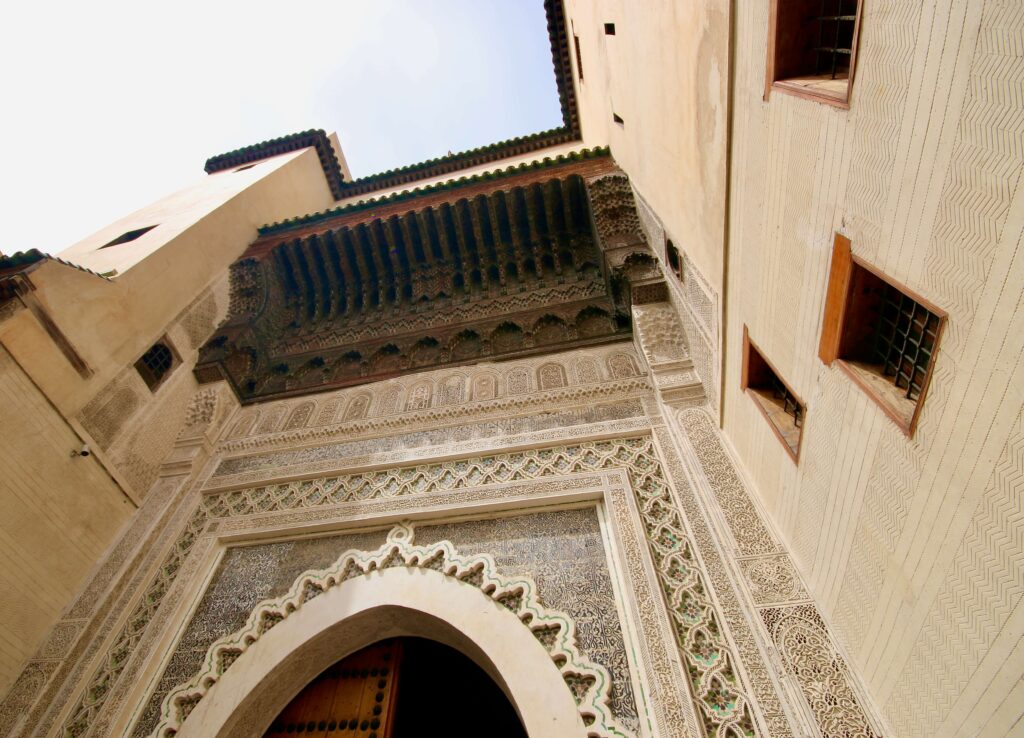
Disclosure: This article contains affiliate links, meaning I earn a small commission when you make a purchase. Affiliate links cost you nothing and ensure my content stays free!
A brief history of Moroccan architecture
While Morocco’s built history dates back to ancient times, the most prominent architectural style in the country emerged during the Islamic period, beginning in the 7th century.
Often referred to as “Moorish”, it was part of a broader regional tradition that spanned the Maghreb region of North Africa. It was also seen across the Iberian Peninsula, known as Al-Andalus.
In Morocco, Moorish design blended indigenous Amazigh architectural traditions with pre-Islamic Iberian influences from the Roman, Byzantine and Visigothic eras. It also incorporated contemporary artistic currents from the Islamic “Middle East”.
Over centuries, this fusion of traditions coalesced into a distinctive Moroccan architectural style. It’s notable for its iconic horseshoe arches and riad gardens. Also clearly visible are the geometric and arabesque motifs that adorn buildings in carved stucco, wood and zellije tilework.
Morocco’s architectural heritage has continued to evolve over time. In the 20th century were the addition of French colonial elements and the emergence of modern, contemporary design.
That being said, the enduring influence of Morocco’s Islamic architectural tradition remains a defining feature of the country’s villages, towns and cities.
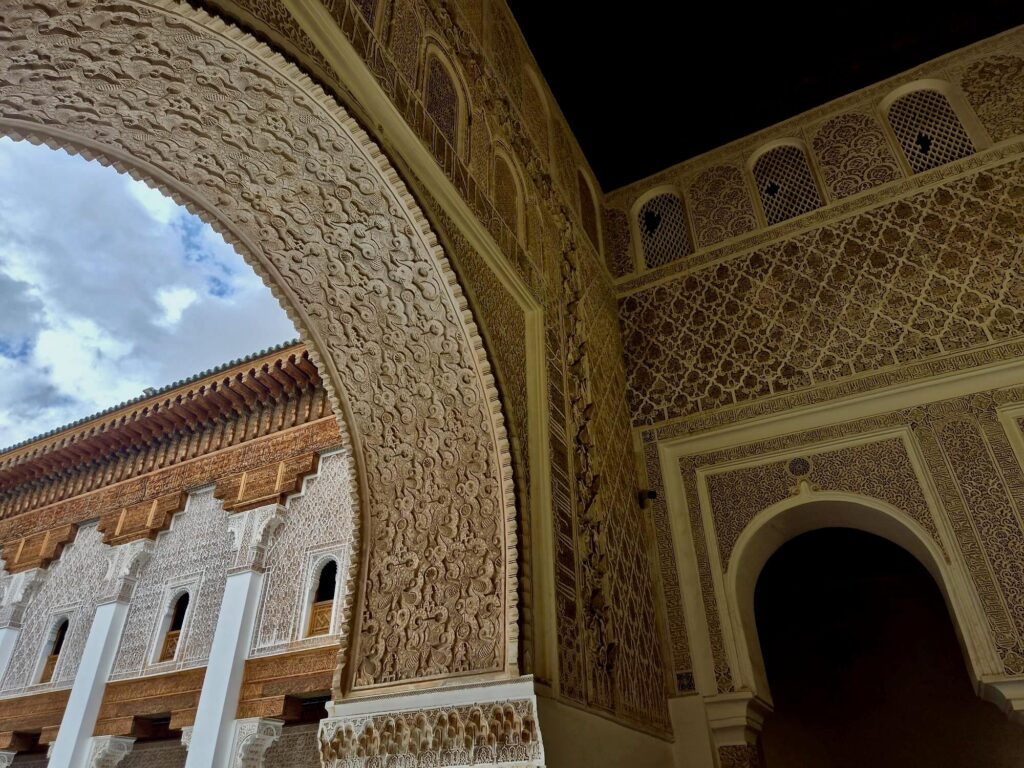
What is a riad?
A riad is a traditional Moroccan house or palace that is built around an interior garden or courtyard. These beautiful buildings are a hallmark of Moroccan architecture and are particularly notable in the medinas of Marrakech, Rabat and Fes.
At the heart of a riad is an open-air courtyard, often adorned with a fountain or reflecting pool (many of which have been transformed into swimming pools). These courtyards are often planted with greenery and sometimes decorated with tilework or carved plasterwork along the walls.
The rooms of the riad are arranged around the courtyard, providing all occupants with direct access. Ornate wooden doors and archways often lead from the courtyard into the various living spaces, which may include bedrooms, sitting rooms and hammams (traditional baths).
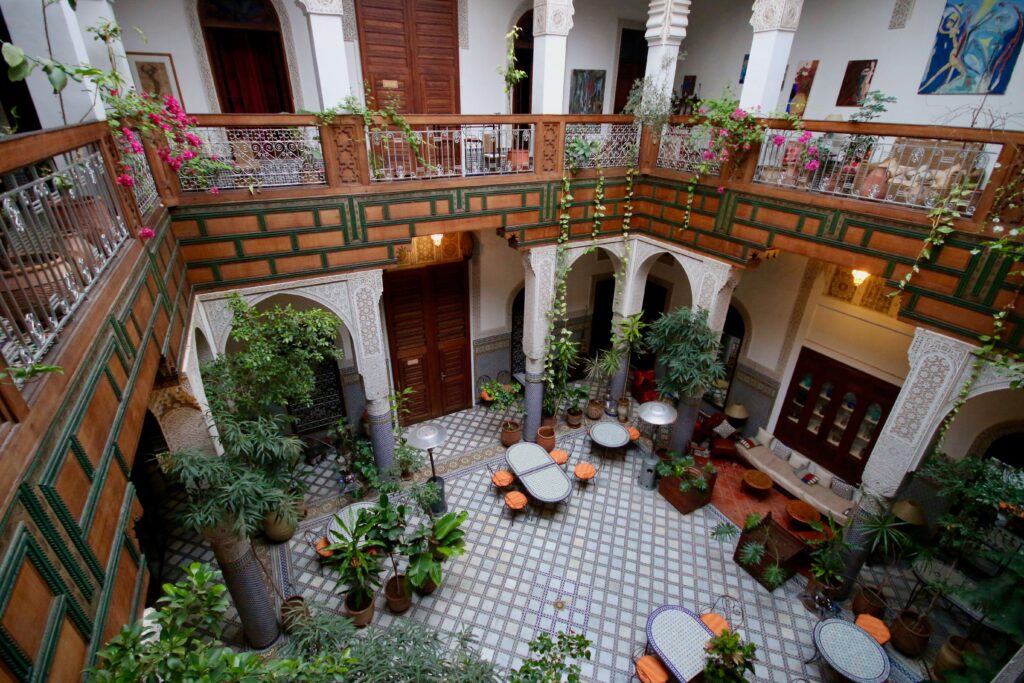
Top tip:
Atop most riads is a rooftop terrace offering panoramic views across the surrounding medina. This is the place to listen to the call to prayer ring out around sunset or enjoy a drink at the end of the day.
Riads were historically the private residences of wealthy Moroccan families and designed to provide respite from the desert heat, with high ceilings, thick walls and shaded lounge areas.
Many have now been converted into boutique hotels and guesthouses. This allows you to experience the beauty and serenity of this iconic Moroccan building style firsthand.
In my opinion, staying in a riad is a highlight of visiting Morocco, particularly for architecture fans, and there are no shortage of options.
If you’re visiting Fes, here’s my pick of the top riads in the city, with something for all budgets. For a riad stay in the Marrakech medina, head here or check out these luxury riads with pools.
Essaouira also boasts its fair share of gorgeous riad hotels. These romantic options are ideal for couples.
What is a kasbah?
A kasbah is a type of fortified citadel that is commonly found in North Africa, particularly in countries like Morocco. They often sit atop hills or mountains, with high, thick walls and towers that were designed to protect the inhabitants from invaders and provide a secure, defensive position.
In Morocco, kasbahs can be broadly grouped based on their geographical location and cultural influences.
In northern Morocco, the kasbahs are castle-like buildings that once served as homes for governors and officials. Notable examples are the Kasbah of the Oudaias in Rabat and the Alcazaba in Chefchaouen. Both were crucial for the control and safety of these cities.
These kasbahs resemble the “alcazabas” in Spain, showcasing their connections to Islamic culture and Moorish heritage.
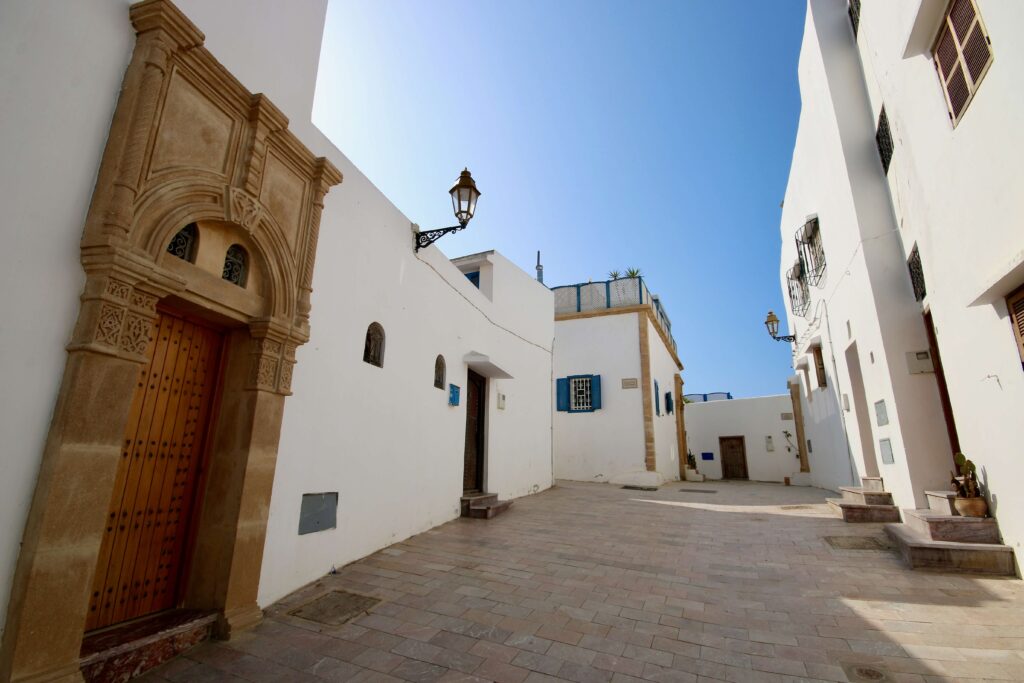
The kasbahs in southern Morocco have a totally different character and purpose from those of the north. Instead of being fortified centres for administration, they were mainly built as homes for affluent families and meeting spots along key trade routes.
Made mostly from adobe bricks, these kasbahs illustrate a deeper connection to Amazigh cultural heritage.
While the northern kasbahs were designed to be enduring foundations for future cities, the southern kasbahs were placed in strategic spots but weren’t necessarily meant for long-term expansion.
One of the most impressive examples of a kasbah in Morocco’s south is Kasbah Taourirt near Ouarzazate. It was once owned by the powerful Glaoui family and was strategically positioned at the confluence of several rivers.
It’s one of many kasbahs that can be visited along the Route of 1000 Kasbahs, which is an essential Moroccan driving route for architecture fans.
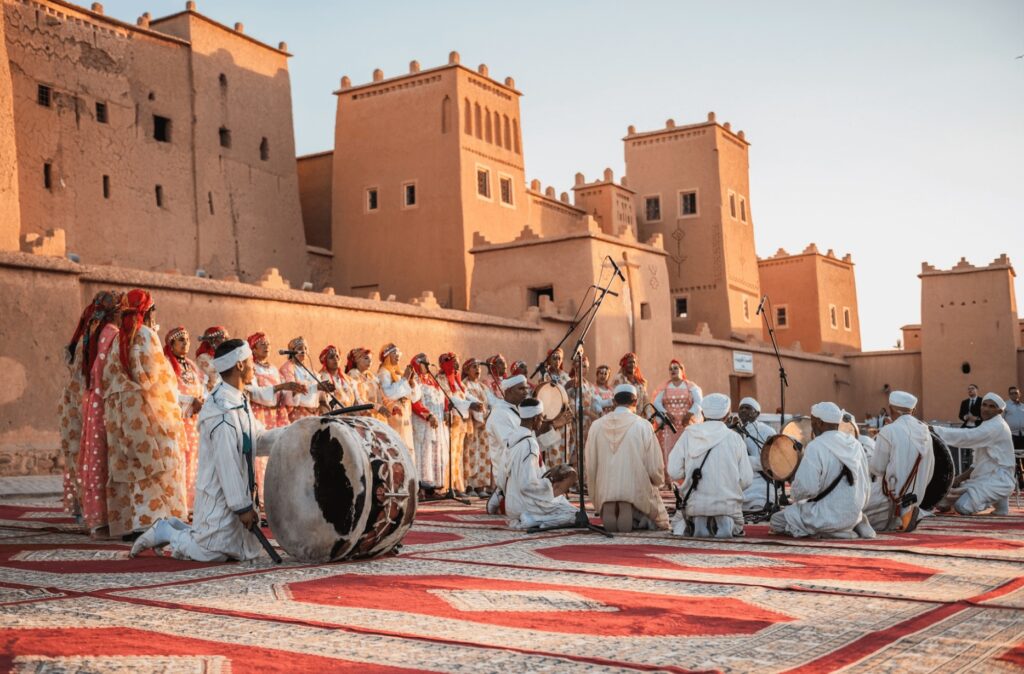
What is a ksour or ksar?
A ksar is a traditional fortified village or settlement that is commonly found in the Saharan and pre-Saharan regions of North Africa.
These unique structures were typically built upon a raised platform or hill. They featured high defensive walls and towers surrounding a cluster of mud-brick or stone houses, markets and other communal buildings.
Ksour (plural of ksar) were originally constructed as a means of protection. They served as strongholds against the harsh desert environment and potential threats from rival tribes or invading forces.
The compact, densely-packed layout of the houses and alleyways was designed to conserve water and provide shade from the scorching sun. Meanwhile, the thick earthen walls and strategically-placed towers allowed the residents to monitor the surrounding landscape and mount a defence if needed.
Over centuries, ksour evolved into cultural and economic hubs, serving as important trading posts along historic caravan routes that connected the Sahara to the coast.
Today, many of these ancient ksour still stand as impressive reminders of North Africa’s architectural heritage. Some have also been designated as UNESCO World Heritage sites due to their historical and cultural significance.
Among the most famous is the ksar of Ait Benhaddou, which is located a short drive from Ouarzazate.
Here, you can wander the maze-like alleyways, marvel at the designs adorning the mud-brick buildings and gain a deeper appreciation for the ways in which Morocco’s desert communities adapted to their harsh environment.
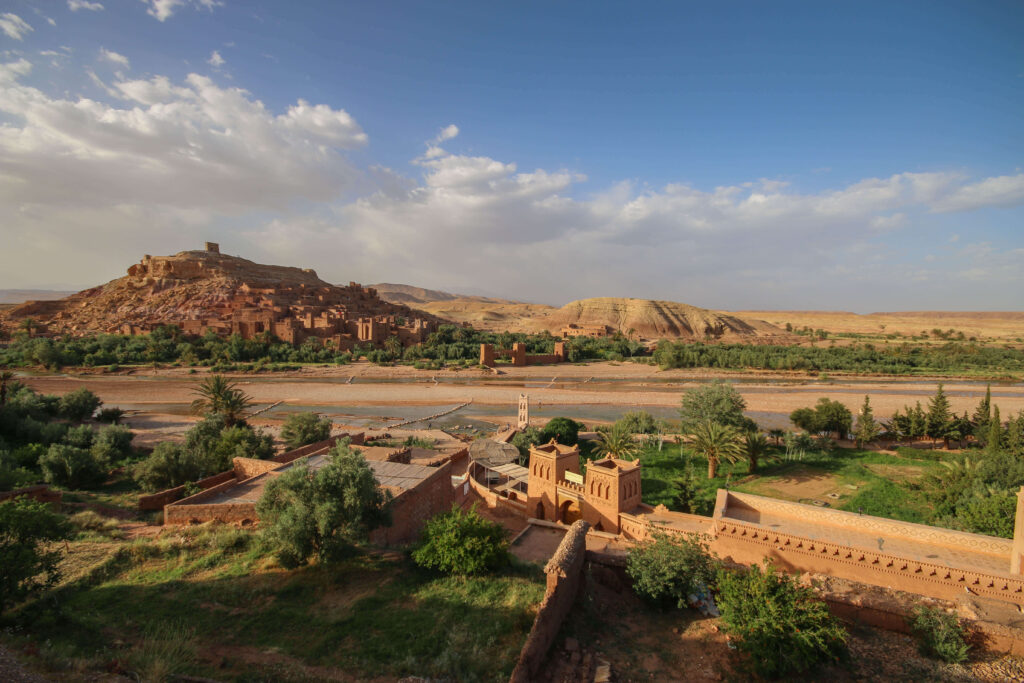
What is a madrasa?
A madrasa is a type of educational institution that is primarily focused on the study of Islamic theology and religious sciences. These schools have a long history, tracing their origins back to the medieval Islamic world.
Over the years, madrasas have played a vital role in the dissemination of Islamic knowledge and the training of religious scholars and leaders.
At madrasas, students were educated in the Quran, the hadith (the recorded sayings and actions of the Prophet Muhammad) and Islamic jurisprudence, as well as Arabic language and grammar.
Beyond just imparting religious education, madrasas served as hubs of intellectual discourse. Students participated in discussions to deepen their understanding of Islamic thought and its application to various aspects of life.
Today, visitors to Morocco can still experience the grandeur of these institutions by touring some of the country’s most spectacular madrasas. Of particular note are Al Attarine Madrasa in Fes, Ben Youssef Madrasa in Marrakech and Abu-al Hassan Madrasa in Salé.
If you’re heading to Fes, check out some of the ancient city’s most beautiful madrasas here.
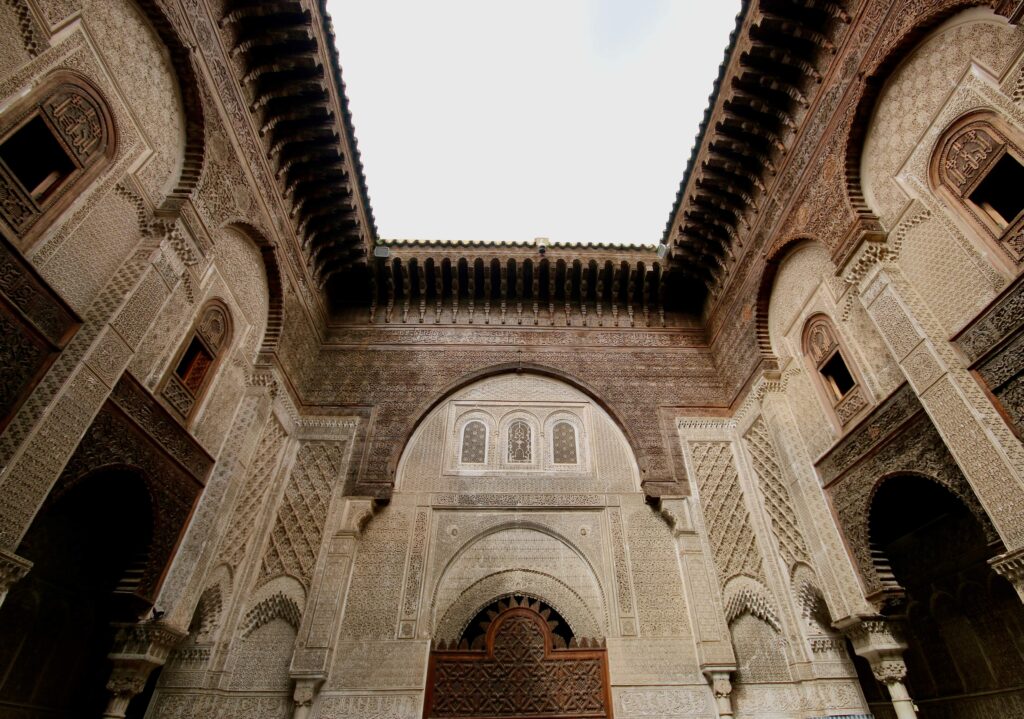
At the heart of these scholarly sanctuaries are spacious inner courtyards, echoing the design of riads. Here, you’ll often find a serene fountain or pool, where students would gather and immerse themselves in the study of the Quran.
The high walls that enclose these courtyards, sometimes rising multiple stories, create a sense of seclusion. Student dormitories are found in the stories above the courtyard, complete with windows from where you can peer down into the space below.
Beautifully carved archways often connect the various chambers, while wooden-latticed balconies offer privacy.
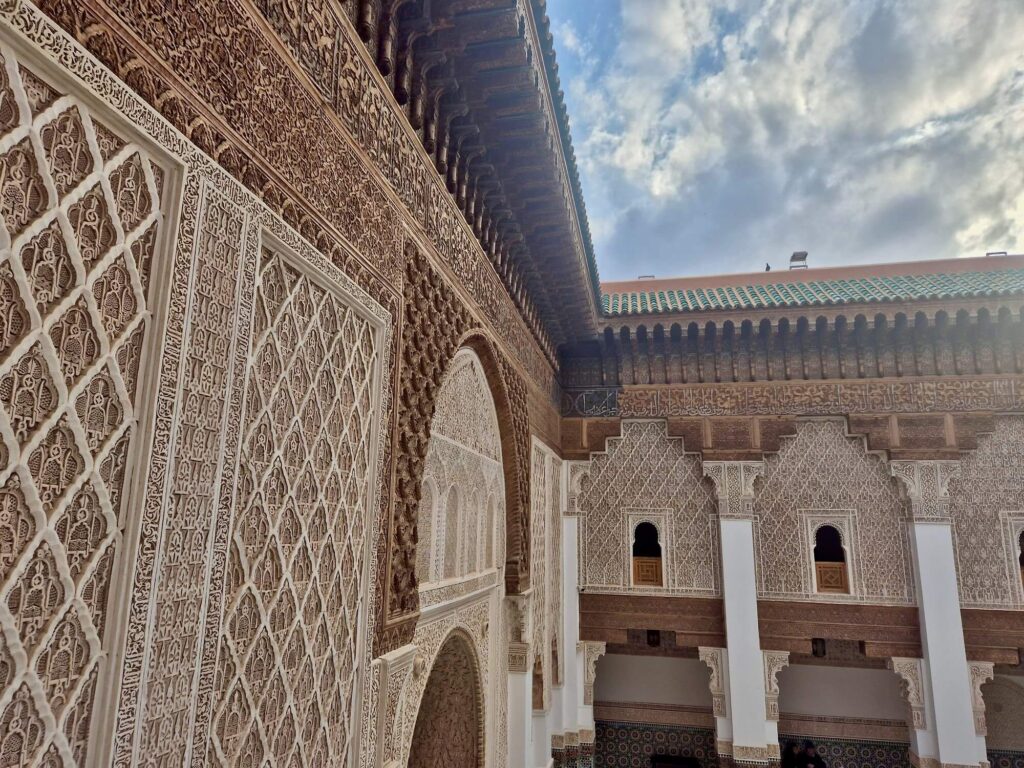
What is a minaret?
Minarets are the towering structures that rise above the corners of mosques. They serve as elevated platforms from which the muezzin, or call-to-prayer caller, summons the faithful to worship. These slender towers are not merely functional but also showcase the artistic prowess of Islamic architecture.
Elaborately decorated with calligraphic inscriptions, geometric patterns and terracotta tiles, Morocco’s minarets reflect the architectural heritage of the Muslim world. They usually boast a single, arched window near the top and a crowning dome that is capped with a decorative finial.
Among Morocco’s most renowned minarets is that of the Koutoubia Mosque in Marrakech. Each side features a distinct type of ornamentation.
Another standout example is the cylindrical minaret of the Sentissi Mosque in Moulay Idriss. It’s sheathed in green-glazed terracotta, giving it an almost iridescent appearance.
The tallest minaret in Morocco is undoubtedly that of the Hassan II Mosque. It rises 210 metres above the oceanfront promenade of Casablanca. Hassan II Mosque’s minaret is visible from across the city and really is a sight to behold!
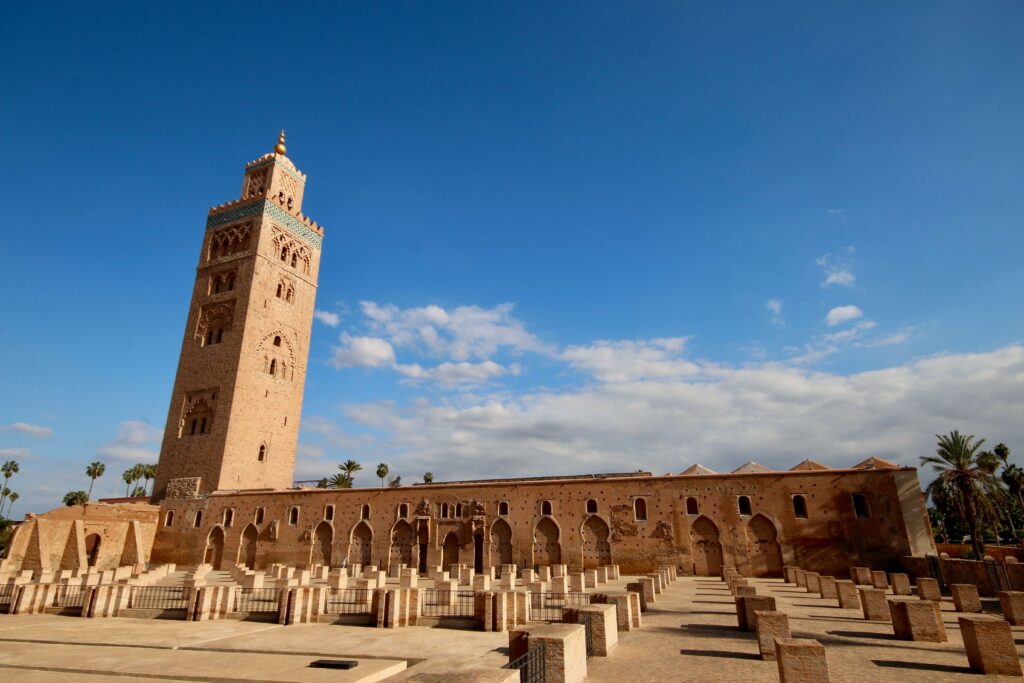
Beyond their minarets, Morocco’s mosques are also architectural marvels in their own right. They are typically built around a central courtyard with an ornamental water fountain and an arched portico.
The prayer hall within is divided into naves. Some Moroccan mosques feature plain, austere interiors, while others are adorned with exquisite tiling.
At the heart of the prayer hall stands the mihrab. This is a niche in the wall that indicates the direction of Mecca, towards which worshippers face during their devotions.
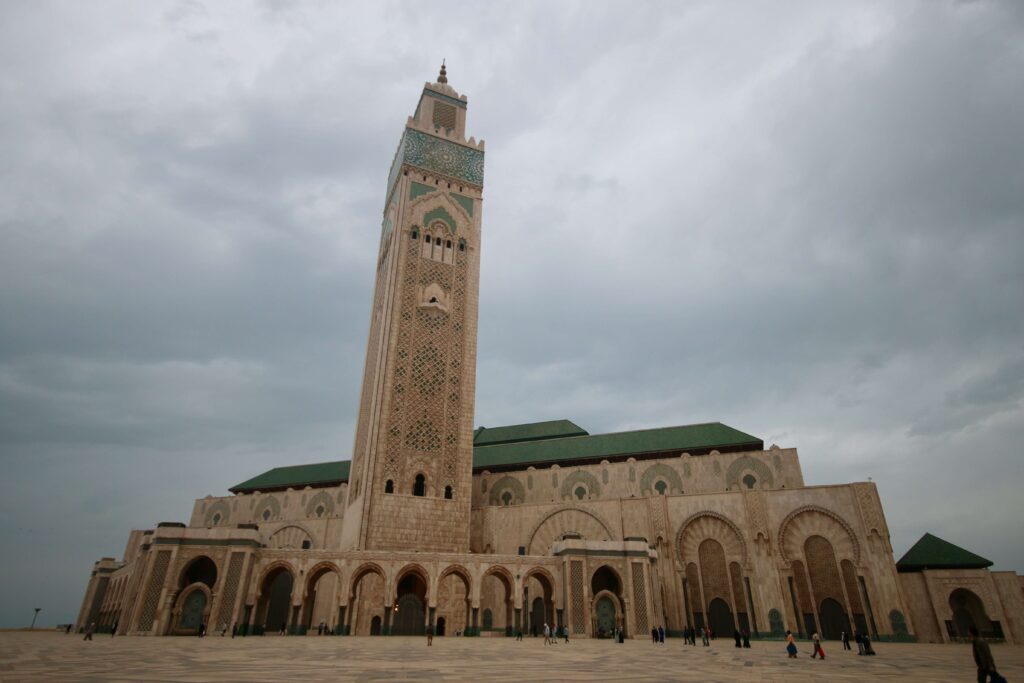
What is zellige?
Zellige is a type of mosaic tilework and a ubiquitous decorative feature adorning the lower walls and floors of buildings throughout Morocco. It is crafted from hand-cut pieces of faience, a type of glazed earthenware. You’ll find zellige in a vibrant array of colours that are fitted together to create elaborate geometric patterns.
This unique tilework technique first emerged in the region during the 10th century. It became increasingly widespread by the 14th century and reached new heights of sophistication during the Marinid period.
The origins of zellige, however, can be traced back to Byzantine mosaics. Muslim craftsmen went on to adapt and transform faience materials using their own distinct techniques.
To create zellige mosaics, the individual tiles are first fabricated as square pieces, typically measuring around 10 centimetres per side. Then, they are painstakingly hand-cut into a variety of pre-determined geometric shapes. This is a skill that has been passed down through generations of Moroccan artisans.
An established repertoire of specialised tile shapes, known as the “hasba” method, allows Moroccan craftsmen to combine the pieces in countless complex patterns and designs.
Although the specific motifs may vary across different sites and buildings, the core principles and methods behind zellige have remained the same for centuries.
If you want to see some of the most stunning zellige in Morocco, be sure to visit Al Attarine Madrasa in Fes or the Mausoleum of Moulay Idriss in Meknes.
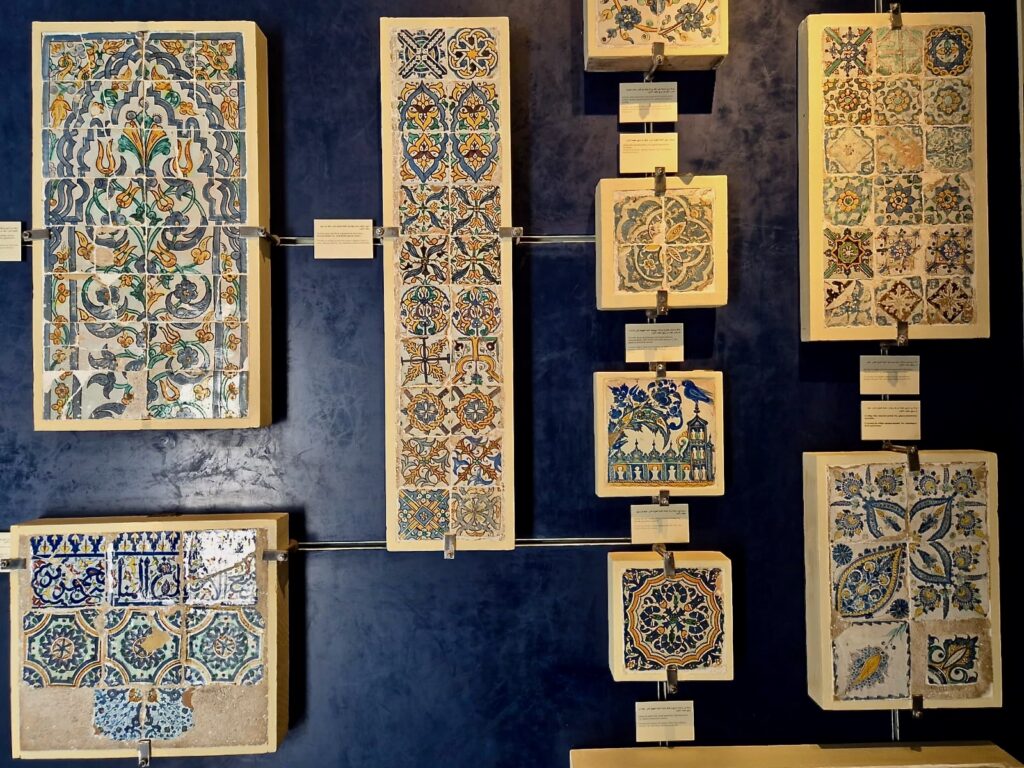
What is a medina?
A medina is the historic, walled-in heart of many towns and cities across North Africa, including Morocco.
Comprising a network of narrow, winding alleyways and streets, they stand in stark contrast to the grid-like layouts of newer urban developments. In Morocco, these more modern areas are often referred to as “Ville Nouvelle”.
The tight, maze-like streets of medinas were intentionally designed to be confusing to outsiders. In years gone by, they acted as a protective barrier against potential invaders.
The buildings lining medina streets are typically made of clay, stone and other traditional materials. You’ll quickly notice their exteriors are relatively austere compared to what lies within.
Among the most famous medinas in Morocco are those of Marrakech and Fes. While they can be intense, they are great places to experience the hustle and bustle of daily life.
In my opinion, Morocco’s medinas provide a fascinating insight into a centuries-old way of living and are a breathing embodiment of North Africa’s cultural identity.
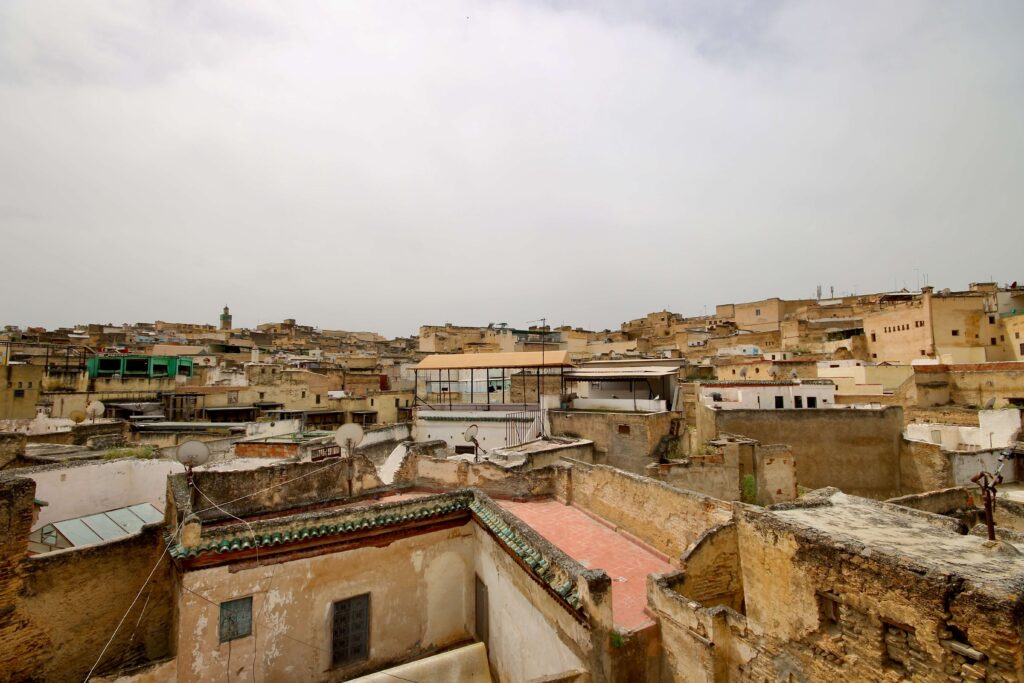
What is a bab?
Many Moroccan cities are ringed by impressive ramparts and gateways (known as “babs”). Most were built centuries ago and have stood the test of time.
Many of these grand entryways are framed in a distinctive horizontal rectangle shape. Some feature decorative spandrels adorned with intricate floral motifs or delicate shell designs.
One of the most iconic examples of these Moroccan babs can be found in the city of Meknes. Bab Mansour is designed in the Almohad architectural style and set between two highly crenellated towers.
It originally served as a ceremonial entrance for the Kasbah of Sultan Moulay Ismail. However, a smaller side “bab” now connects the medina and Imperial City of Meknes.
Also of note is Bab Agnaou (one of the 19 historic gateways of Marrakech). It was constructed in the 12th century, also during the reign of the Almohads. Bab Agnaou is renowned for the elaborately carved stone and stucco embellishments that adorn its towering archway.
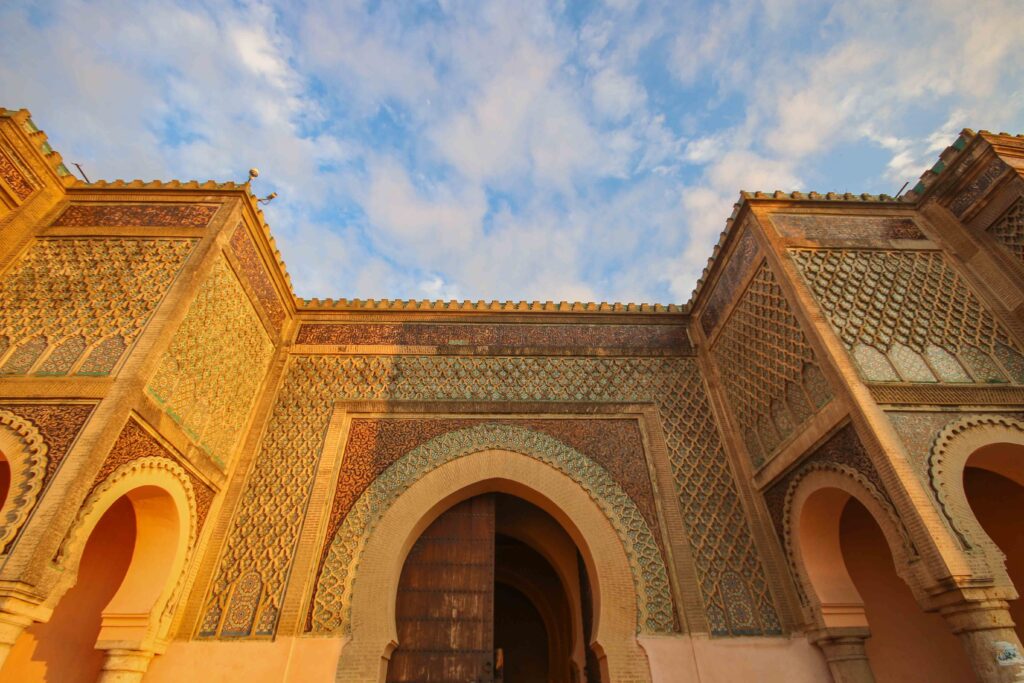
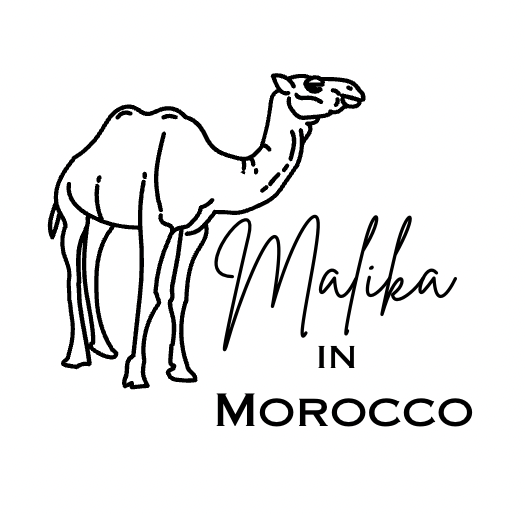
PLAN YOUR TRIP WITH MY FAVOURITE RESOURCES:
Find hotels via Booking
Book tours and attractions via Viator or GetYourGuide
Find a rental car via Discover Cars
Book flights via Kiwi or Booking
Search for buses and trains via 12Go or Omio
Get travel insurance via SafetyWing
Buy a digital eSIM with Airalo
By purchasing through my links, you’ll be supporting my website at no additional cost to you
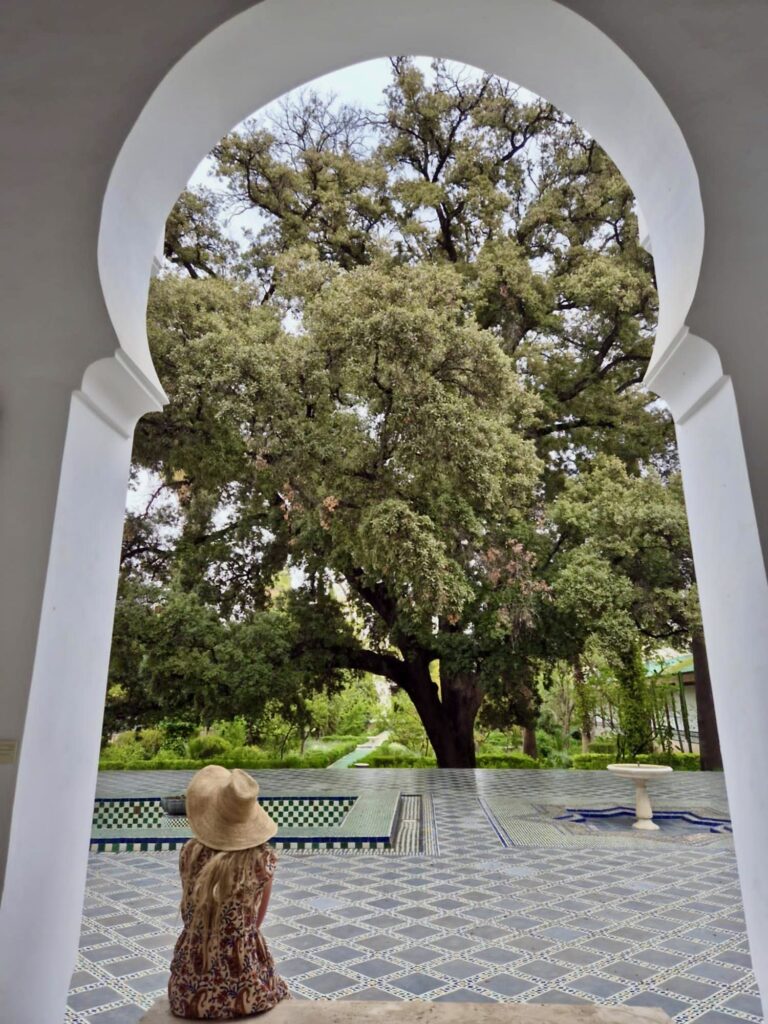
About Me
I’m Malika, a global traveller who first visited Morocco in 2014 before marrying a local and settling down in a little village on the Atlantic coast. Over the years, I’ve developed an intense love for Morocco, its incredible landscapes, storied cities and the exceptionally generous hospitality of its people.
Malika in Morocco is a place to share my years of experience exploring the country, from north to south and from the Atlantic Ocean to the Sahara Desert. As a resource for travellers visiting Morocco, I want to encourage others to experience this captivating destination the way they desire, whether that’s independently or under the expert guidance of local tour operators.
I believe strongly in supporting responsible and sustainable tourism initiatives while inspiring travel experiences that are life-impacting and mutually beneficial for both travellers and locals.
-
10 Beautiful Buildings in Morocco to Add to Your Itinerary
Morocco is renowned for its architectural treasures, with strikingly beautiful buildings and monuments scattered throughout the country. From the opulently decorated mosques and madrasas of the imperial cities to the earthen-walled kasbahs and ksours of the south, the country’s diverse architectural traditions reflect its cultural, geographical and religious heritage. If you’re a fan of architecture…
-
Meet the indigenous Amazigh people of Morocco
Often referred to as “Berbers”, the Amazigh people of Morocco are a diverse collection of ethnic groups Indigenous to North Africa. While they are concentrated primarily in the Maghreb region (Algeria, Libya, Mauritania, Tunisia and Morocco), they can also be found in northern Mali and northern Niger. Predating the arrival of Arabs in the region,…
-
Should I Get Travel Insurance For Morocco? Everything to Know
Whether you’re travelling to Morocco on a one-off trip or living a semi-nomadic lifestyle in the country, travel insurance should be a top priority before you head off. I’m someone who never travels abroad without travel insurance. It was drummed into me by my parents when I was young that it just wasn’t worth the risk. After…
-
Visiting Morocco’s Sahara Desert: Everything You Need to Know
Planning on visiting Morocco’s Sahara Desert? Discover everything you need to know to plan an incredible visit, from the best tours and self-drive itineraries to highly-rated desert camps. One of the most transformative experiences I’ve had in Morocco was spending a night under the star-studded sky of the Sahara Desert. Not only did I feel…
-
Renting a Car in Casablanca: Everything You Need to Know
Thinking about renting a car in Casablanca? Discover everything you need to know, from road conditions to safety issues and car hire costs in Morocco. Casablanca is Morocco’s main aviation gateway and the first port of call for many international travellers. So it makes sense that it’s also one of the best places to rent a car…
-
Renting a Car in Marrakech: Everything You Need to Know
Renting a car in Marrakech is a fantastic way to explore southern Morocco on your own terms. This is particularly ture if you want to visit the Sahara Desert, follow the Route of 1000 Kasbahs or venture into the spectacular gorges of Dades and Todra. While the train and bus networks in Morocco cover a…
